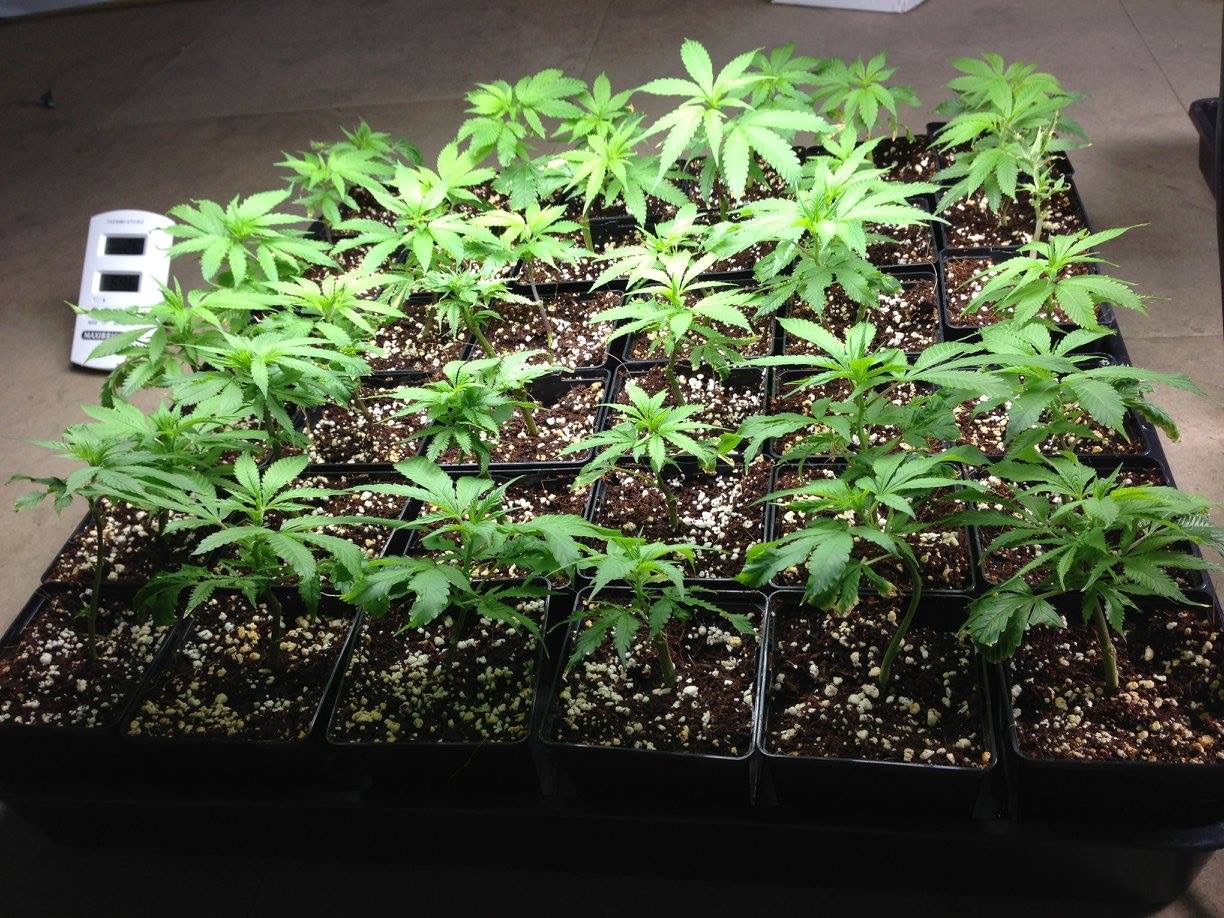
If you’re growing feminised cannabis plants outdoors and loving what you see, cloning might be the smartest move you can make before flowering kicks in. June is a prime time for this—especially late June—when plants are still in full veg mode and outdoor conditions are perfect for rooting healthy, vigorous cuttings.
This guide is for growers who want to learn how to clone cannabis plants outdoors successfully. Whether you’re looking to save genetics, expand your grow, or just stretch your seed investment, cloning can give you an edge.
And yes—we’re talking about feminised photoperiod plants here. Autoflowers like Black Orchid Auto and Purple Haze Auto aren’t suitable for cloning. We’ll explain why, and what you should do instead.
What Is Cloning and Why Do It?
Cloning is simply taking a cutting from a healthy cannabis plant and rooting it so it becomes a new, genetically identical plant. You’re essentially copying your favourite strain without needing another seed.
Why clone?
- Genetic preservation – If you love how one plant is growing, cloning ensures the next one performs the same.
- Saves money – You don’t need to buy more seeds to get more plants.
- Saves time – Rooted clones are further along in development than seedlings.
- Uniformity – Clones behave predictably and respond to feeding and training similarly.
It’s an especially powerful tactic if you’re growing high-performance strains like Bruce Banner #3 Fem or Alien Moonrocks Fem, where the results are worth repeating.
Why June Is the Best Time to Clone Outdoors
Cloning is all about timing. You want your mother plants to be in strong vegetative growth so that the cuttings root quickly and grow vigorously.
In late June:
- Plants are at their strongest, with long days and warm temperatures.
- Outdoor humidity and warmth support root formation naturally.
- There’s still time for clones to root, veg, and even flower before the season ends.
Wait too long, and your plants will start to flower—making cloning much harder and often unsuccessful.
Autoflowers and Cloning: Why It Doesn’t Work
Cloning autos is a common question, but the short answer is: don’t bother.
Autoflowers are time-based, not light-dependent. Their internal clock starts ticking the day they sprout. So if you clone one at day 20, your cutting is already 20 days into its life cycle—even though it doesn’t have roots yet.
By the time it roots (if it even does), it will be halfway to flowering with no size, no structure, and very little yield. Skip cloning autos and instead replant from seed using fast-finishing autos like Black Orchid Auto or Purple Haze Auto.
How to Clone Cannabis Outdoors (Step-by-Step)
Cloning outdoors isn’t about perfection—it’s about making the most of the natural environment. You don’t need a fancy tent or cloner. Just a healthy plant, clean tools, and some care.
Step 1: Choose Your Mother Plant Wisely
Look for:
- Strong vegetative growth
- No signs of pests, disease, or deficiencies
- At least 5–6 nodes of healthy branching
- A strain worth repeating (think: Bruce Banner #3 Fem, Alien Moonrocks Fem)
Never clone from a flowering plant unless you’re prepared for long, slow recovery (and often disappointing results).
Step 2: Prepare Your Cloning Tools
You’ll need:
- Sharp, sterilised scissors or blade
- Rooting hormone (gel or powder)
- Small pots or cups with light soil, coco, or peat pellets
- Clear humidity dome, plastic bottle, or shaded area with high ambient humidity
- Spray bottle with clean water
Step 3: Take the Cutting
- Cut a 4–6 inch branch just below a node (the spot where leaves attach).
- Make your cut at a 45-degree angle for more surface area.
- Remove the lower leaves and any large fan leaves.
- Dip the cut end into rooting hormone immediately.
Step 4: Plant and Cover
- Gently insert your cutting into moist growing medium.
- Mist the leaves lightly.
- Cover with a dome or place in a shaded, protected area outdoors to maintain humidity.
If using a cut plastic bottle, remove the cap to allow air exchange. Keep out of direct sun and strong wind.
Step 5: Maintain the Right Conditions
Clones love:
- High humidity (70–85%)
- Warmth (21–26°C)
- Indirect light—not full sun, but bright shade is perfect
Mist them daily and check for wilting or mold. Most clones root in 7–14 days, depending on the strain and conditions.
When Are Clones Ready to Transplant?
Once you see:
- New leaf growth at the top
- Strong resistance when gently tugged
- Healthy roots poking out of the medium (if visible)
…it’s time to transplant.
Ease them into direct sunlight over a few days. Start light feeding with a mild veg nutrient mix, and you’re off to the races.
How Much Time Do June Clones Have?
If you root your clones by early July, they’ll have:
- 2–4 weeks of veg time before natural flowering triggers
- Enough size to produce solid yields (especially in warm climates)
- A similar finish window to the mother plant—late September to early October
This makes cloning a great strategy for boosting your fall harvest without starting from seed again.
Why It’s Worth Cloning High-Performance Strains
If you’re growing a powerhouse like Bruce Banner #3 Feminised, you already know how aggressive and high-yielding it can be. Why not get a second (or third) plant with the exact same traits?
Likewise, Alien Moonrocks Fem is one of those unique, heavy-hitting hybrids you don’t want to lose. Cloning ensures you keep that structure, terpene profile, and effect consistent.
Even if you only clone a few branches, that can translate to multiple bonus plants without spending a penny more on seeds.
What If You Don’t Want to Clone? Try Replanting Instead
If cloning isn’t for you—or if your plants are already flowering—no problem. You can still get more from your grow by replanting autos for a second summer harvest.
Drop new seeds of:
- Black Orchid Auto – dark, rich, and quick to finish
- Purple Haze Auto – uplifting and resilient, even in late summer
You can go from seed to harvest in 9–10 weeks, making replanting in late June or early July a viable way to fill out your grow space and keep your garden productive.
Troubleshooting Outdoor Cloning
Here are a few common issues and how to handle them:
- Cuttings wilt or fall over – Humidity too low or too much light. Move to a shadier spot and mist more frequently.
- Mold or rot on stems – Overwatering or poor airflow. Remove affected clones, increase ventilation, and clean tools.
- No roots after 14 days – Some strains take longer. Check temps and hormone strength. Try re-cutting the stem if needed.
And remember: not every cutting will root. Plan for 70–80% success, and take extras if you want insurance.
Should You Keep a Mother Plant?
Outdoors, it’s tricky—photoperiod mother plants require consistent 18+ hours of light to stay in veg, and that’s hard to manage without indoor space or supplemental lighting.
For most outdoor growers, the better move is:
- Clone in June
- Flower and harvest in the same season
- Take fresh clones next year from new seed plants
If you have a greenhouse or indoor setup, you can keep a mother plant alive and clone indefinitely—but it’s not necessary for seasonal outdoor success.
Final Thoughts
Outdoor cloning in June is a smart, efficient, and rewarding way to get more out of your grow. It’s low-cost, low-risk, and once you get the hang of it, you’ll wonder why you didn’t start sooner.
Here’s the recap:
- Clone feminised photoperiod strains only—autos don’t work.
- Do it now, in late June, while plants are still in veg.
- Keep conditions humid, shaded, and warm.
- Choose elite performers like Bruce Banner #3 Fem and Alien Moonrocks Fem.
- If cloning’s not your style, consider replanting with Black Orchid Auto or Purple Haze Auto for a second summer harvest.
Need more seeds for round two? Want new genetics worth cloning next season?
Explore the full range at Original Sensible Seeds. All our strains are tested for outdoor success and loved by growers across Europe and beyond.
Because growing great weed shouldn’t stop at one harvest.







